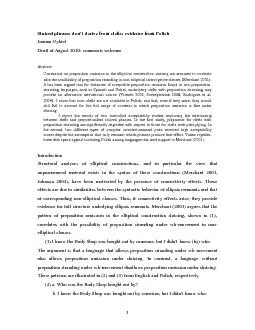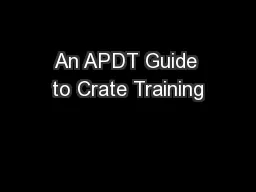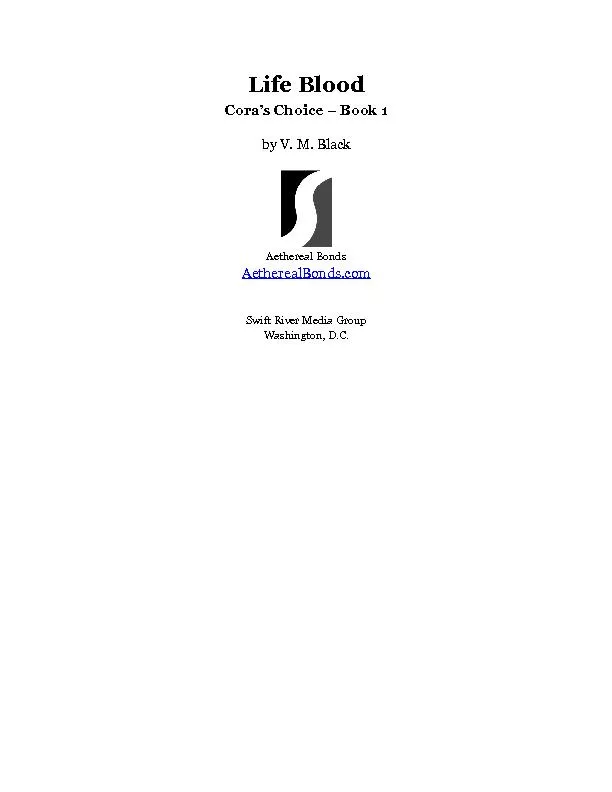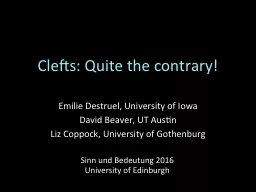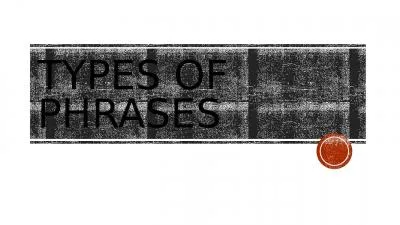PDF-Sluiced phrases don’t derive from clefts: evidence from Polish
Author : sherrill-nordquist | Published Date : 2015-10-25
1 Joanna Nykiel Draft of August 2010 comments welcome Abstract Constraints on preposition omission in the elliptical construction sluicing are assumed to correlate
Presentation Embed Code
Download Presentation
Download Presentation The PPT/PDF document "Sluiced phrases don’t derive from..." is the property of its rightful owner. Permission is granted to download and print the materials on this website for personal, non-commercial use only, and to display it on your personal computer provided you do not modify the materials and that you retain all copyright notices contained in the materials. By downloading content from our website, you accept the terms of this agreement.
Sluiced phrases don’t derive from clefts: evidence from Polish: Transcript
Download Rules Of Document
"Sluiced phrases don’t derive from clefts: evidence from Polish"The content belongs to its owner. You may download and print it for personal use, without modification, and keep all copyright notices. By downloading, you agree to these terms.
Related Documents

